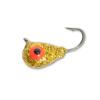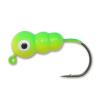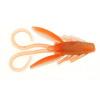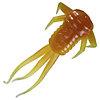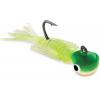ROCK BASS
How to identify a Rock Bass
The rock bass is a large and robust sunfish that looks like a cross between a bluegill and one of the black basses (e.g. largemouth bass). Its body is less compressed than most sunfishes of the genus Lepomis, including the bluegill, and longer in profile. It has been known to reach 3 lbs but the more common size is less than one pound. There is a black spot at the edge of the gill cover and the mouth of the rock bass is larger and more “bass like” than in most small sunfishes. The upper jaw reaches beyond the beginning of the eye, but not completely to the back of the eye. The two dorsal fins are clearly connected and the eyes are red.The rock bass is frequently confused with the warmouth (Lepomis gulosus), but it can be distinguished by the number of spines in front of the soft-rayed anal fin; 3 spines in the warmouth, but 6 in the rock bass. Also, the warmouth has teeth on the tongue unlike the rock bass.
Where to catch Rock Bass
Rock bass are native to the northeastern United States and southeastern Canada, from Ontario and Quebec southward through the Great Lakes region and the Mississippi River Basin. They have also been introduced into other states including some western states. This species prefers small, cool, weedy lakes and streams and the outer edges of larger lakes, always over rocky bottoms (hence the name “rock” bass) where no silt is present, turbidity is low, and cover readily available.
IDENTIFICATION

| |
Red eyes |
| |
Two dorsal fins connected |
| |
Six anal fin spines |
TARGET AREAS
|
|
Acknowledgements: We thank TAKEMEFISHING.org (www.takemefishing.org), Wisconsin Department of Natural Resources for their contributions to these FISH FACTS.


